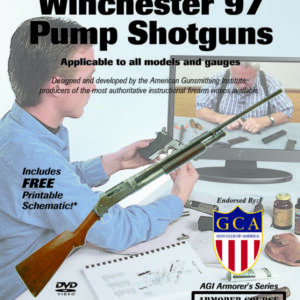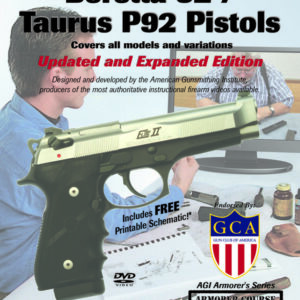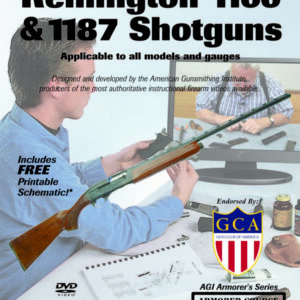Description
With over 4 million of these inexpensive little .22’s out there, this is your chance to really get ahead. These rifles were sold under several different names, and even through department stores like Sears, Western Auto, and Montgomery Wards. This course is applicable to all models. Those of us who have owned one of these neat little rifles know they are great for accuracy and reliability, but when they do go bad, it is hard to find someone who knows how to fix them. Well, here is your chance to learn what it takes to keep your gun up and running or simply ways to repair the ones you picked up cheap. Join Master Gunsmith Bob Dunlap for two hours of instruction on the design and function of one of the best-selling guns of our time. As always Bob uses a custom cut-a way and shows complete disassembly of the gun, and gives tips on what repairs are common and how to fix them yourself. Not only is it fun and informative, but you will be able to take advantage of some of the best deals in the gun market today. If you want the quick course on how to get these Marlin / Glenfield rifles apart, back together, and operating as intended, then this course is for you (if you want the long course, look into our basic 108 hour Professional Gunsmith Course.)
Among the items covered are:
History
- Bob discusses the Marlin Model 99 and its variations
- Early and later models of the Marlin 99 are compared
Different Model Variations
- We get to look at an earlier Marlin 99 that has a unique bolt lock and it is compared to a later model which has a bolt that locks open on an empty chamber
- Through comparisons of various models, we get a feel for the evolution of this rifle
- Other comparisons, such as: trigger guards, feed throats, and ejectors, show us that this rifles design and quality improved as it evolved
- Papoose Model
- Two piece stock (Model 49) is discussed
Design & Function
- A cut-a way firearm is utilized to be able to see normally hidden parts, their function, and interaction
- Trigger mechanism operation is explained and shown
- Bob explains some problems that can occur with the disconnector/trigger bar and the sear, and how to correct those problems as well
- Firing pin and hammer operation explained and demonstrated
- Bob explains how hammer follow down can occur, resulting in misfires and the possibility of the gun doubling
- Recoil buffer operation is explained
- We are shown how the recoil buffer wears and what to watch out for as it wears
- Caution is given because a cracked or broken buffer can cause the bolt to damage the back of the receiver
- Ammunition feeding is explained. The carrier and the primary and secondary cartridge stops can be seen in action and their functions are demonstrated
- Feeding problems and their repairs are explained
- Bolt operation is demonstrated and the sequence of events is explained
- Disconnector and sear operation is explained and demonstrated
- Old vs. new trigger plate assemblies; the differences can be seen and are described
Clip Fed-Models
- The Papoose Model is shown and its operation is explained
- Magazines front and rear lips functions are explained, along with some problems you may encounter
Disassembly
- Magazine and stock removal
- Trigger guard and nut are taken off of the stock
- Trigger plate and bolt removal
- Magazine tube disassembly is explained
- Bolt disassembly (roller, firing pin, and extractors)
- Right and left extractors and their functions are explained
- Trigger housing is disassembled and explained
- Fire control system is disassembled and all parts are further explained
Cleaning & Lubrication
- AGI cleaning & lubrication methods shown, along with the reasons for their use
- After cleaning, dry with air gun, or in the oven on Warm ~185-200 degrees (metal parts ONLY)
- Lubing the Bob way, and what kind he likes
Reassembly
- Trigger housing reassembly
- Bolt is reassembled
- Fire control reassembly
- Receiver and stock reassembly
- Operational tests and summary
If you noticed how often the terms “explanation” and “demonstration” are used, you may be getting some idea of why this course is necessary for any Marlin / Glenfield .22 rifle owner, or someone who intends to be.




